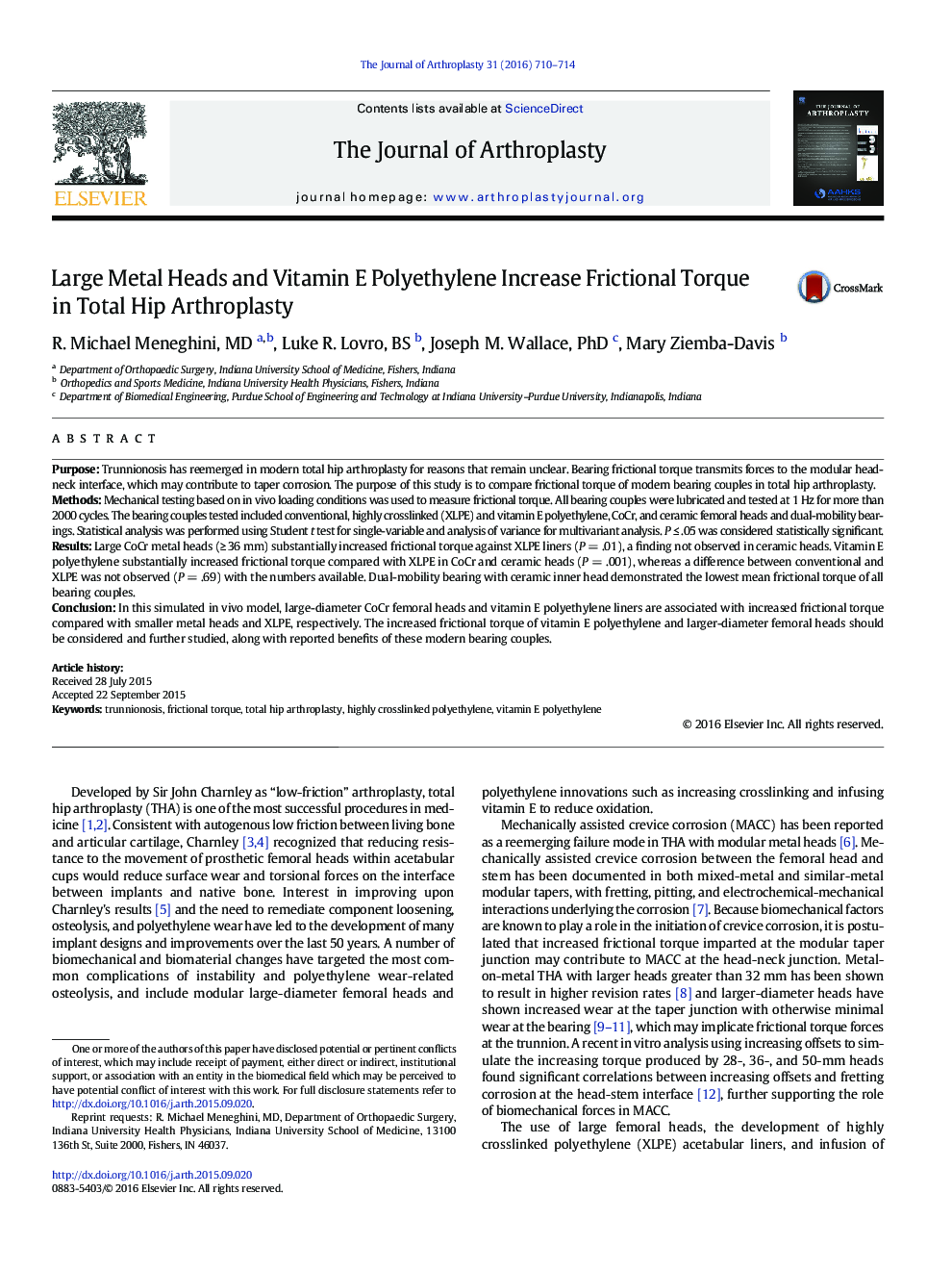| Article ID | Journal | Published Year | Pages | File Type |
|---|---|---|---|---|
| 4059999 | The Journal of Arthroplasty | 2016 | 5 Pages |
PurposeTrunnionosis has reemerged in modern total hip arthroplasty for reasons that remain unclear. Bearing frictional torque transmits forces to the modular head-neck interface, which may contribute to taper corrosion. The purpose of this study is to compare frictional torque of modern bearing couples in total hip arthroplasty.MethodsMechanical testing based on in vivo loading conditions was used to measure frictional torque. All bearing couples were lubricated and tested at 1 Hz for more than 2000 cycles. The bearing couples tested included conventional, highly crosslinked (XLPE) and vitamin E polyethylene, CoCr, and ceramic femoral heads and dual-mobility bearings. Statistical analysis was performed using Student t test for single-variable and analysis of variance for multivariant analysis. P ≤ .05 was considered statistically significant.ResultsLarge CoCr metal heads (≥ 36 mm) substantially increased frictional torque against XLPE liners (P = .01), a finding not observed in ceramic heads. Vitamin E polyethylene substantially increased frictional torque compared with XLPE in CoCr and ceramic heads (P = .001), whereas a difference between conventional and XLPE was not observed (P = .69) with the numbers available. Dual-mobility bearing with ceramic inner head demonstrated the lowest mean frictional torque of all bearing couples.ConclusionIn this simulated in vivo model, large-diameter CoCr femoral heads and vitamin E polyethylene liners are associated with increased frictional torque compared with smaller metal heads and XLPE, respectively. The increased frictional torque of vitamin E polyethylene and larger-diameter femoral heads should be considered and further studied, along with reported benefits of these modern bearing couples.
